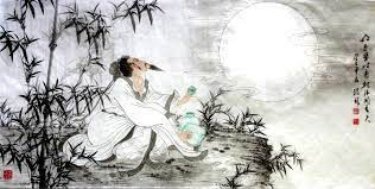New Anthology of Classical Chinese Poetry
China, Poetry, Tang Dynasty, Wong May
Dennis Zhou reviews Wong May’s In the Same Light: 200 Tang Poems.
In 755, the Sogdian-Turkish general An Lushan rebelled against Emperor Xuanzong of the Tang dynasty after a dispute with a cousin of the emperor’s favorite concubine. Within a year, the general had captured the eastern capital of Luoyang and declared himself emperor; the next year, his forces seized and sacked the capital of Chang’an (present-day Xi’an), then the most populous city in the world. Although An—blind, crazed, and so obese that he was said to crush horses to death under his own weight—was assassinated in 757 by a eunuch conspiring with his son, the rebellion continued for several years until finally being put down by the imperial army in 763. As many as 36 million people were killed or displaced during the insurrection—three-quarters of the population. The Tang dynasty never fully recovered, and after suffering another uprising in the ninth century, China descended into civil war, ending what many consider its Golden Age.
This era of war and famine coincided with an immense flowering of calligraphy, painting, and poetry. In the eighth century, Chang’an had become a bustling, cosmopolitan city with countless canals, parks, teahouses, and monasteries and a diverse population that included Uighurs, Turks, Japanese, and Koreans. With the imperial examination system, which recruited bureaucrats on the basis of their knowledge of classical literature and philosophy, poetry was elevated to a stature that it has rarely, if ever, reclaimed: a class of scholar-officials governed the empire, and no one could rise in the ranks without the ability to compose an elegant quatrain or a witty couplet.
The Tang Dynasty, which lasted more than 270 years, produced China’s greatest poets: the Daoist drifter Li Bai, the Confucian poet-historian Du Fu, the painter-poet Wang Wei, the Buddhist hermit Han Shan, and many others. Their lives were marked by unceasing political turmoil. Refugees and fugitives, they spent their years wandering from place to place, falling in and out of imperial favor and all the while drinking, singing, and writing. Their poetry—for the most part regulated verse comprising linked couplets of between five and seven characters—is what we think of when we think of Classical Chinese poetry.
The astounding influence that Chinese poetry in translation has had on the English language throughout the 20th century—from the Modernist, Imagist revolution of Ezra Pound’s Cathay (1915) through its mid-century, counter-cultural incarnation by Gary Snyder, Kenneth Rexroth, and others—can be traced to this ragtag assortment of drunkards, hermits, and exiles. Very few collections, however, situate the Tang poets fully within their political and historical context, drawing out both the urgency and stakes of their verse. Many anthologies… simply follow the model of Three Hundred Tang Poems (1763) compiled by the Qing scholar Sun Zhu, which for many decades remained the standard text. In the Same Light (The Song Cave, 2022), translated by the Chinese-Singaporean-Irish poet Wong May, does something different. Collecting 200 poems by 38 poets, Wong May promises to find parallels between their time and the present and, in so doing, update them “for our century.” To do this, she excavates her own story and its resonance with those of the Tang poets.




